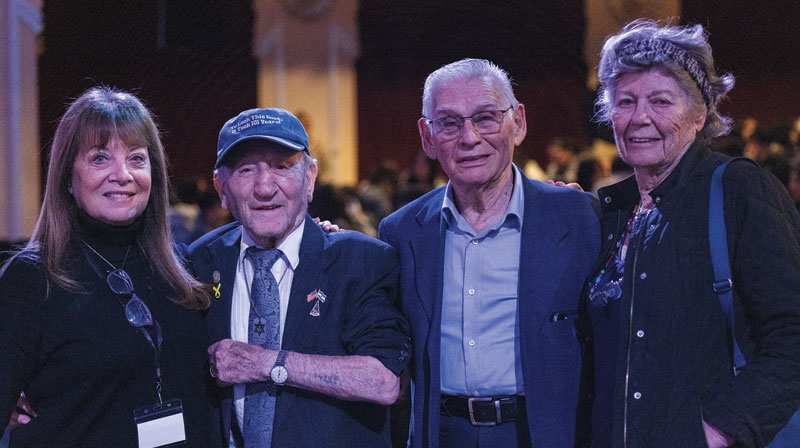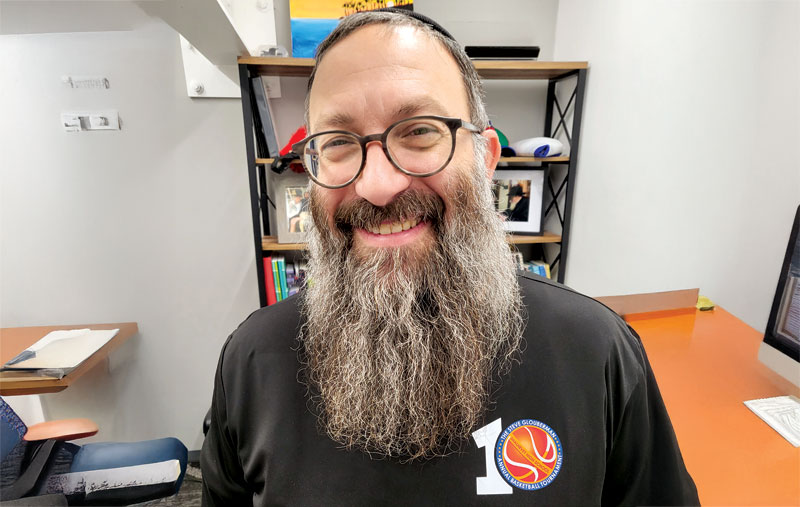On a recent Thursday, 81-year-old Saul H. Jacobs looked out from behind a microphone at the crowd gathered in Culver City Senior Center’s main auditorium and issued a warning.
“This is the first time we’ve done this show in front of a live audience,” Jacobs told the 150-plus attendees. “This is our show — ‘Fred Astaire: His Songs and His Dancing Girls’!”
Audience members briefly put down their song sheets — complete with lyrics from Astaire musical numbers — and erupted into applause. Bob Lipson, 80 and Jacobs’ close friend of 63 years, took his cue at the piano and launched into “Lovely to Look At” from the 1935 film “Roberta,” starring Fred Astaire and Ginger Rogers.
Despite the disclaimer, Jacobs and Lipson put on a stellar show, craftily infusing showmanship and audience participation with a history lesson on Astaire. Jacobs detailed Astaire’s ascent from humble beginnings to Hollywood royalty; his relationships with frequent collaborators such as Rogers; and theorized about what separated Astaire’s athletic skills from those of his contemporaries.
“Astaire pioneered a new form of tap,” Jacobs told the crowd. “It had always been all legs. Think Gene Kelly. Astaire used his whole body. He incorporated use of his arms, legs and torso for visual ornamentation.”
Intermittently, they broke into song. That’s when Lipson took over on piano, backed by bassist Steve Fry and vocalist Jan Lacey. They covered famous Astaire hits such as “I Won’t Dance” (also from “Roberta”), “Let’s Call the Whole Thing Off” (from 1937’s “Shall We Dance”) and “Puttin’ on the Ritz” (from 1946’s “Blue Skies”). On some numbers, Jacobs encouraged audience members to join in using their song sheets, though most didn’t need the printed lyrics to recall every line of the classics on which they grew up.
“Fred Astaire: His Songs and His Dancing Girls” is the 40th show Jacobs and Lipson, both of West Hills, have developed. For the past nine years, they’ve been performing the shows in rotation all over Southern California. Others include “Musical Ways to Say I Love You,” which celebrates the art and evolution of the love song, and “Salute to Yankee Doodle and Other Patriots,” which delves into the history and merit of famous patriotic songs.
The duo performs an average of three times a week, mostly at retirement and senior facilities. One of their favorite sites is the Keiro Retirement Home, a Japanese retirement community. (The Boyle Heights facility was formerly the Jewish Home for the Aging.) Shows there incorporate a Japanese translator. “The laughs there are a bit delayed,” Jacobs said.
They also perform at the Simi Valley Public Library, The Village at Sherman Oaks and numerous other locations. (For their upcoming shows, visit composershows.com.)
Jacobs, a former writer and director of informational films, outlines the show’s educational segments in script form. During performances, Lipson, a former industrial real estate broker and a classically trained musician, plays piano and chimes in off-script, often directing one-liners at pal Jacobs, who fires back with witty verve. These are two good friends having a good time together onstage.
Jacobs and Lipson met at UCLA (class of ’55 and ’56, respectively) as members of a Jewish fraternity and they formed a lifelong friendship, one that has seen their families grow close over the years as well. Late in their careers, both returned to UCLA to teach: writing for Jacobs, industrial real estate for Lipson.
In 2007, while on a cruise through the Panama Canal, Jacobs saw a show by Chet and Marlene Solender, a husband-and-wife act who sang and told stories about great American songwriters.
“As soon as I saw them perform, a light went on in my head, and I visualized me doing those same kinds of shows with Bob at the Milken JCC in West Hills, where I was extremely active at the time,” Jacobs said.
When he returned to L.A., Jacobs wrote out his own take on those same songwriters and approached Lipson about putting together the music. Lipson was ecstatic.
“This is how we keep young,” Jacobs said. (Lipson was quick to point out that he’s a solid nine months younger than his good friend.)
Later that same year, they began performing their show as a monthly event at the now-defunct JCC at Milken in West Hills, focusing on American-Jewish songwriters such as George and Ira Gershwin, Stephen Sondheim, and Rodgers and Hammerstein. It was titled “Those Nice Jewish Boys and Their Wonderful Songs.”
Lipson’s musical background and Jacobs’ scriptwriting experience infuse their creative process with something akin to the complementary working relationship of the songwriting teams they admire. A shared passion for those musical teams of the first half of the 20th century is a big part of why Lipson and Jacobs do what they do.
“The impetus was to present this music. It’s all real melodies and you can really sing to it,” Lipson said.
Lipson, who plays with a jazz band at the Colburn School of Performing Arts, said he has seen his musical ability reach new heights as a result of their shows.
“In the old days, I used to play for myself,” he said. “Now there’s an audience. I have to be a virtuoso. I have to play up to 30 songs for a show sometimes. I’ve made a huge leap.”
They get something else from the experience of playing shows, too: “Joy. We get back unbelievable joy,” Lipson said.
Jacobs then recalled a passionate audience member from a gig in South Pasadena.
“She comes to every show we do there. One time, she came up to us and said, ‘I postponed my surgery to come see your show today.’ It was a triple bypass surgery,” Jacobs said. “We touch something. We have fun.”






















 More news and opinions than at a Shabbat dinner, right in your inbox.
More news and opinions than at a Shabbat dinner, right in your inbox.